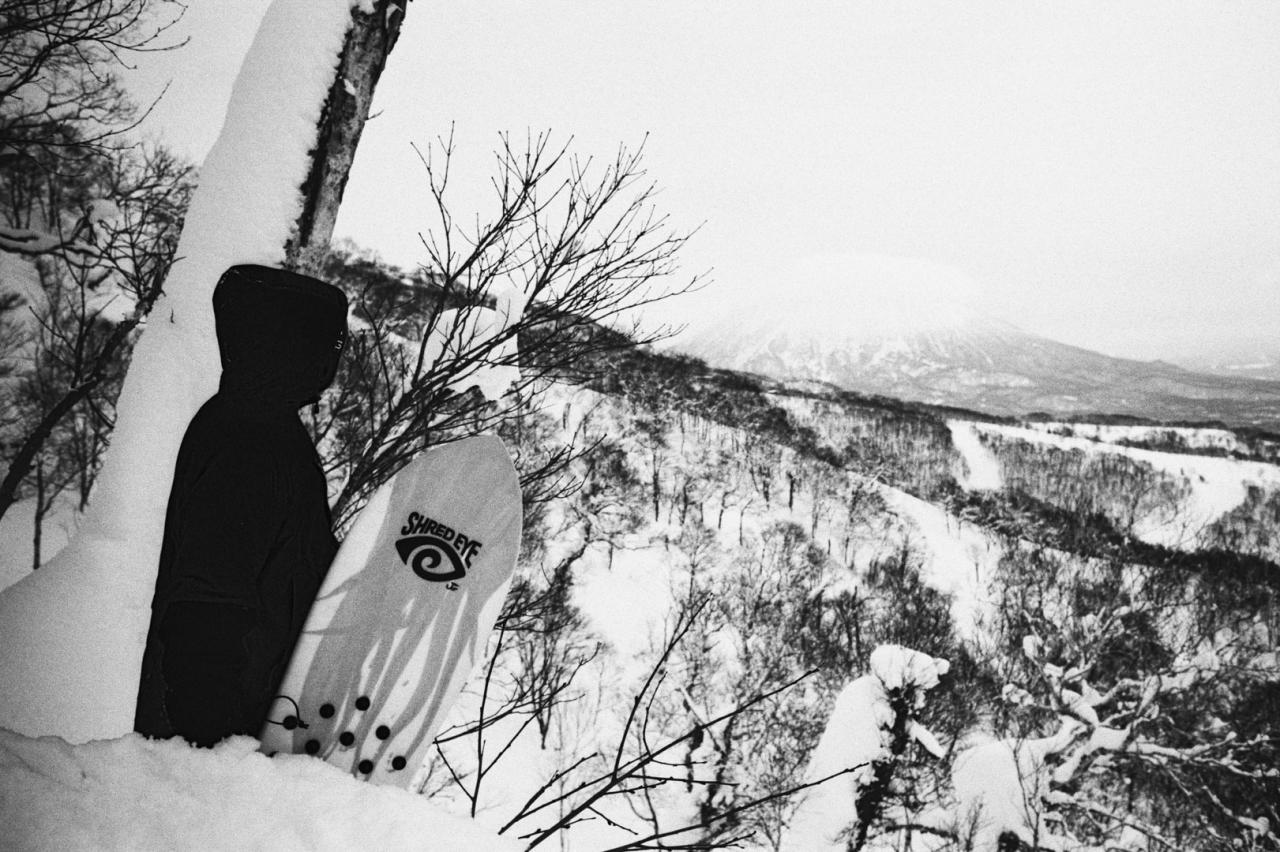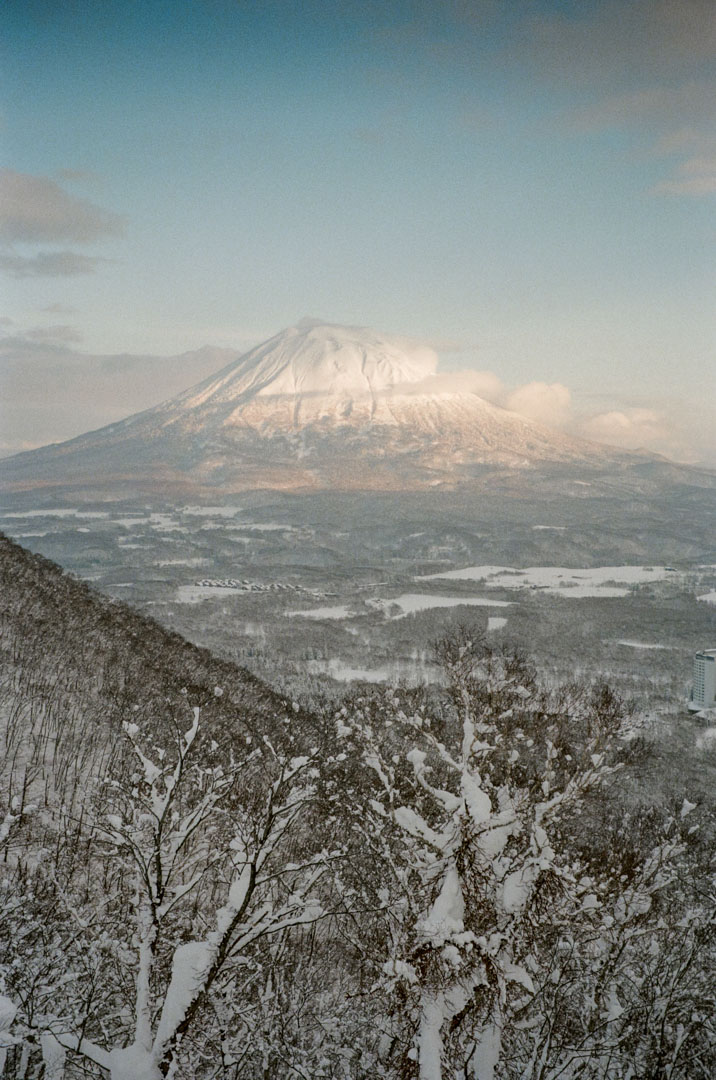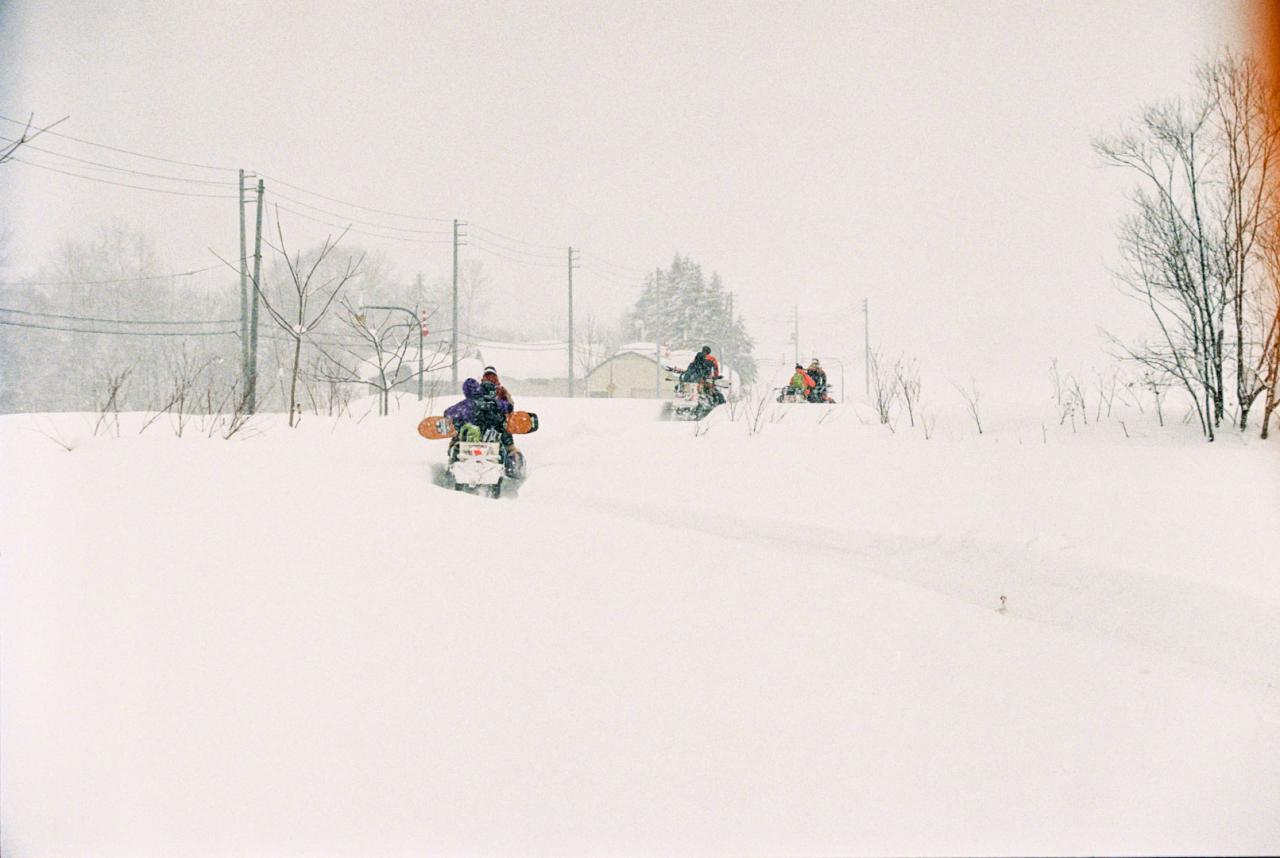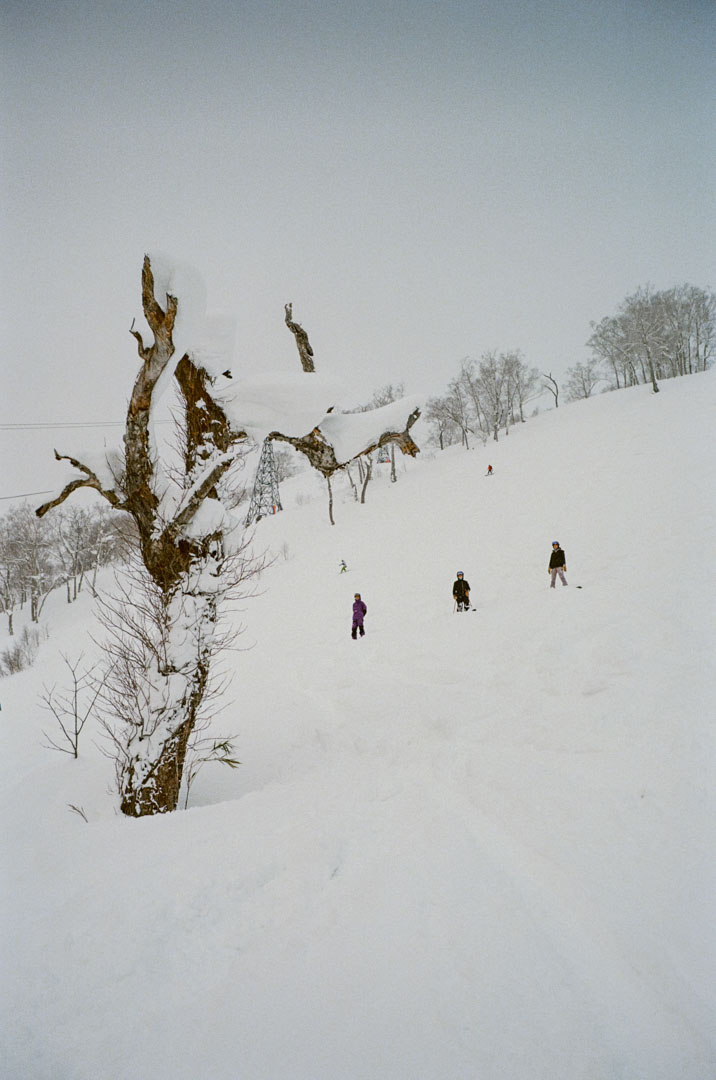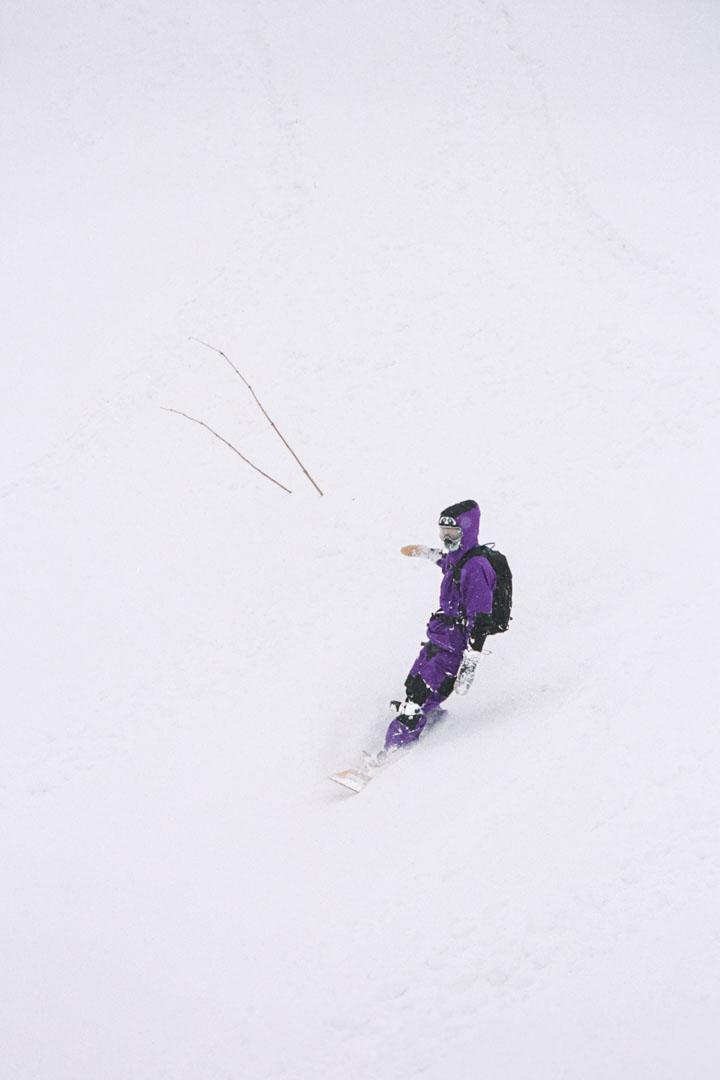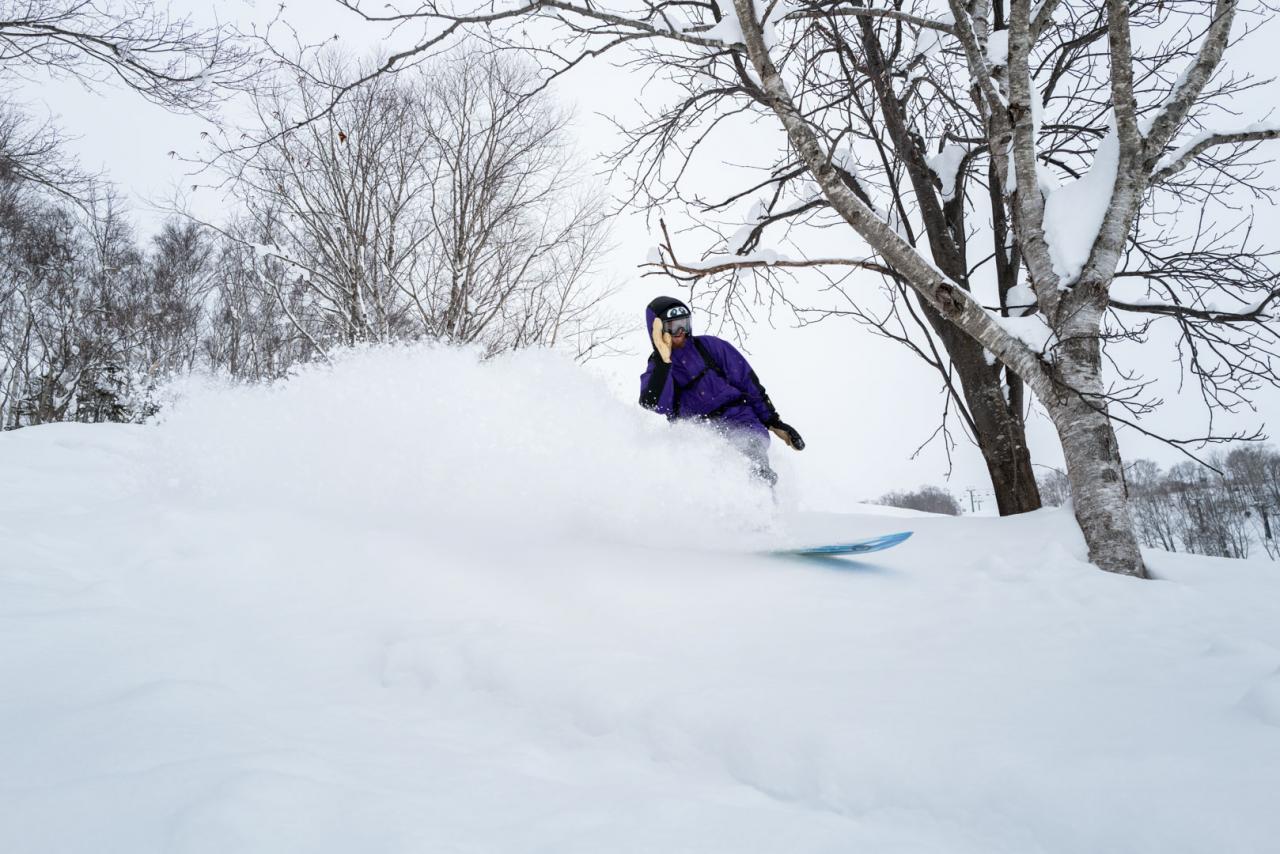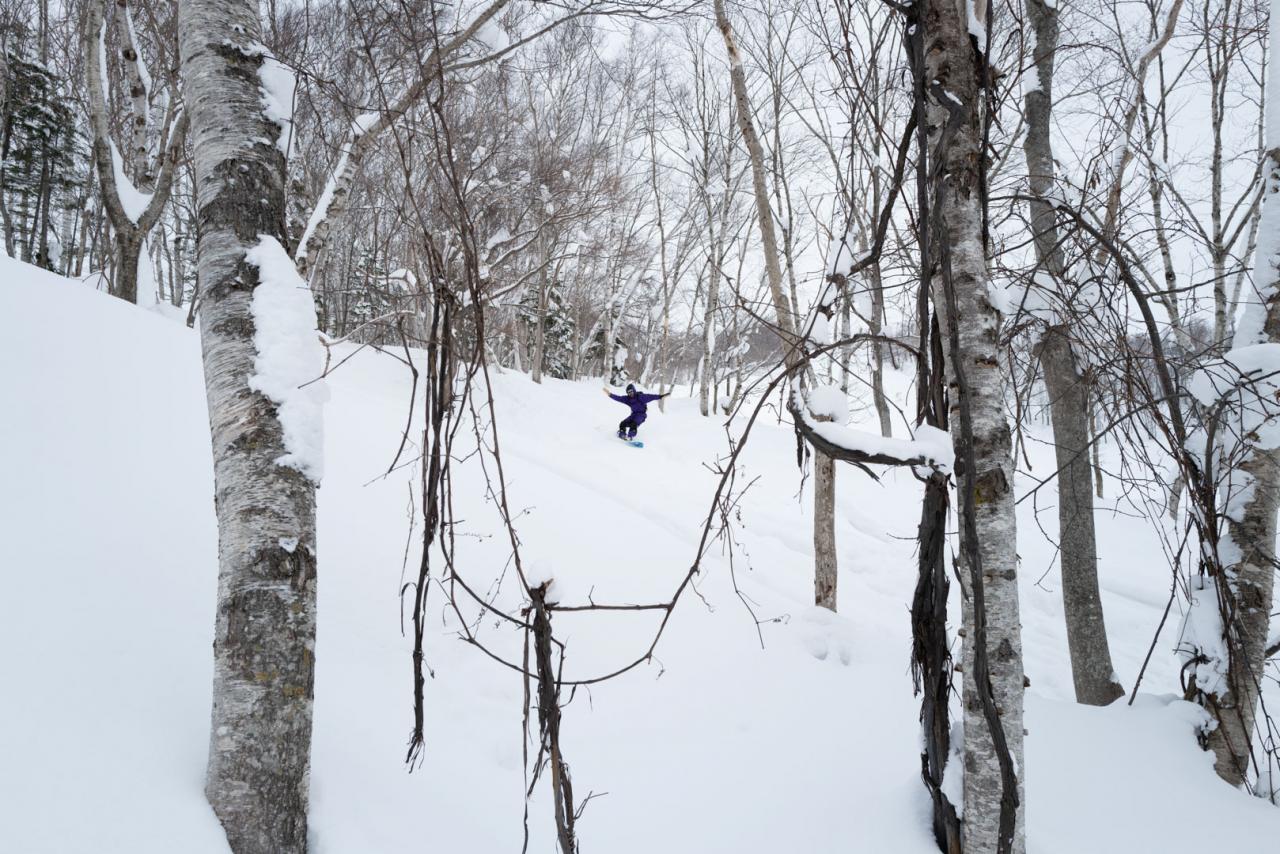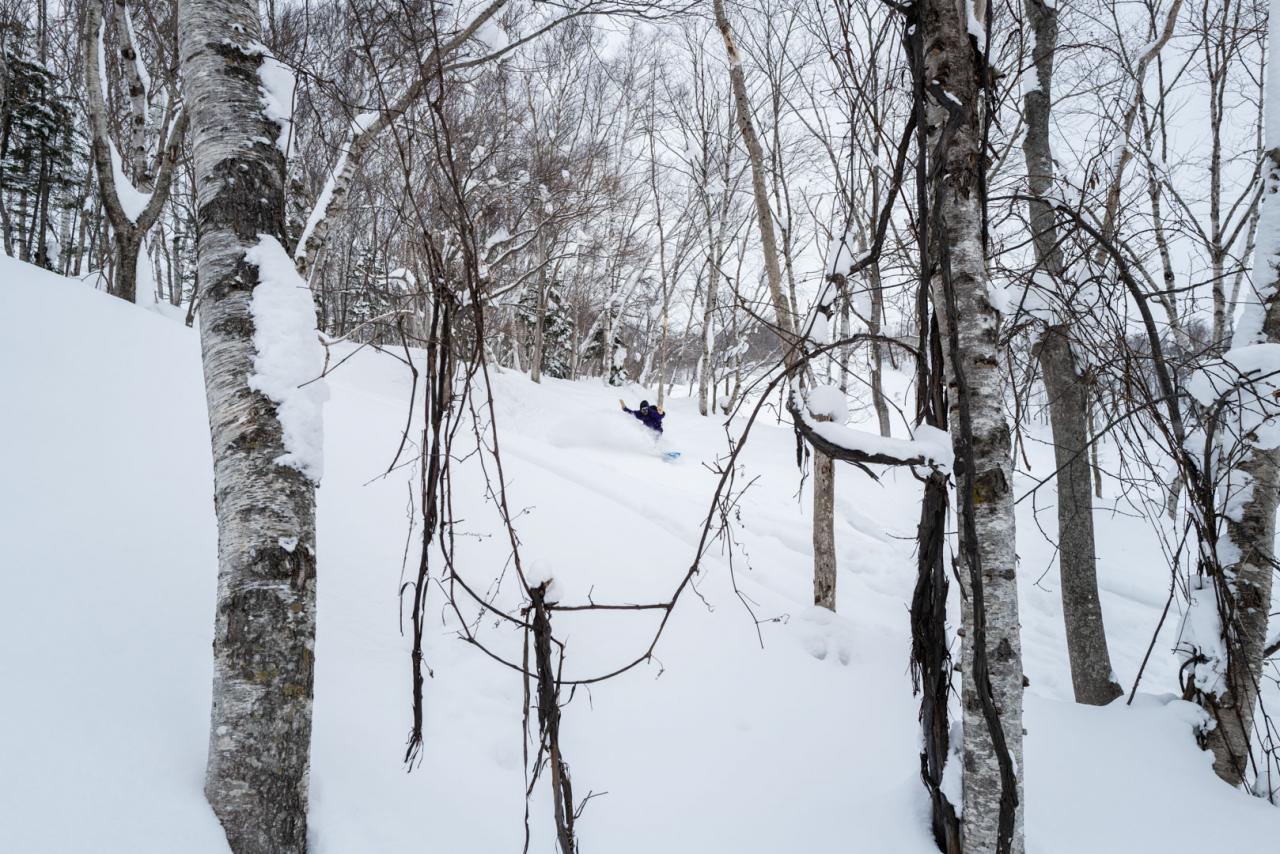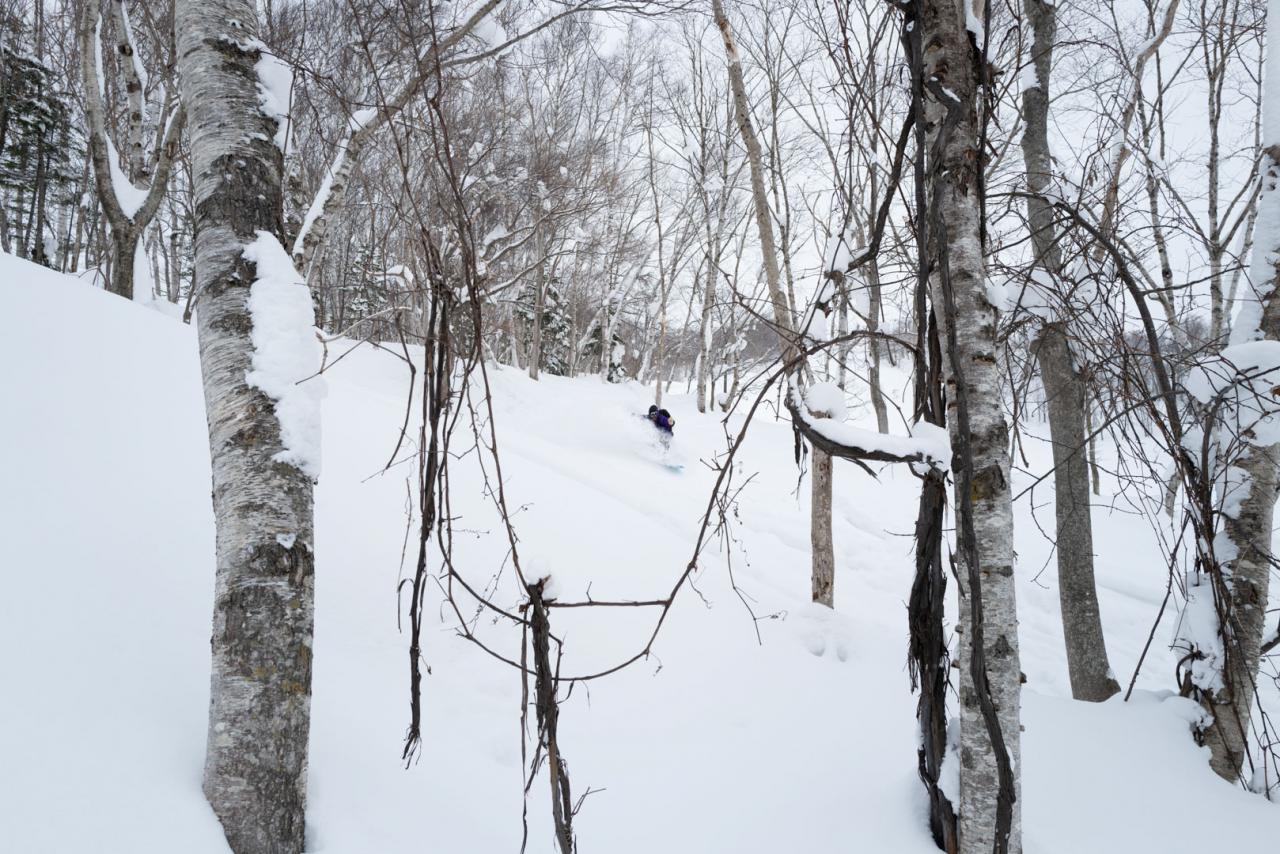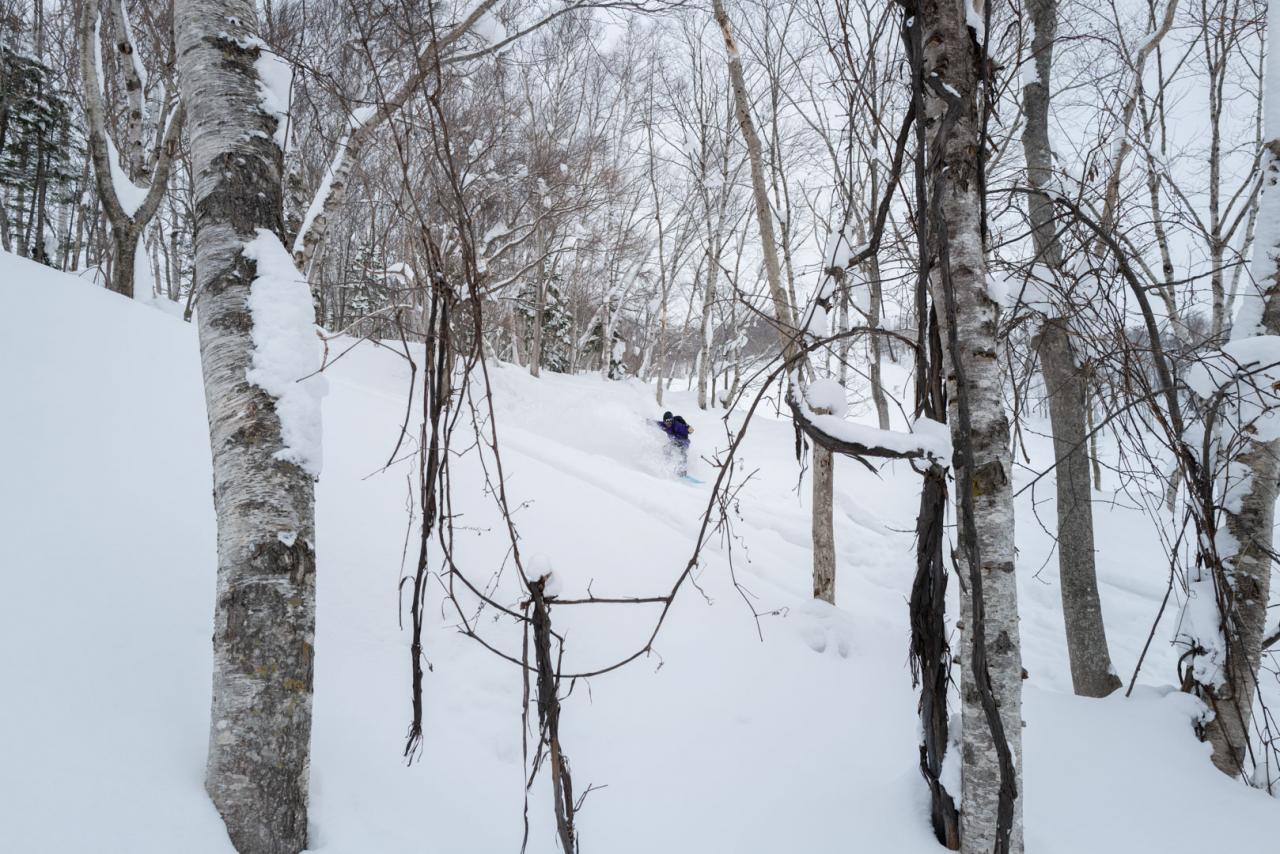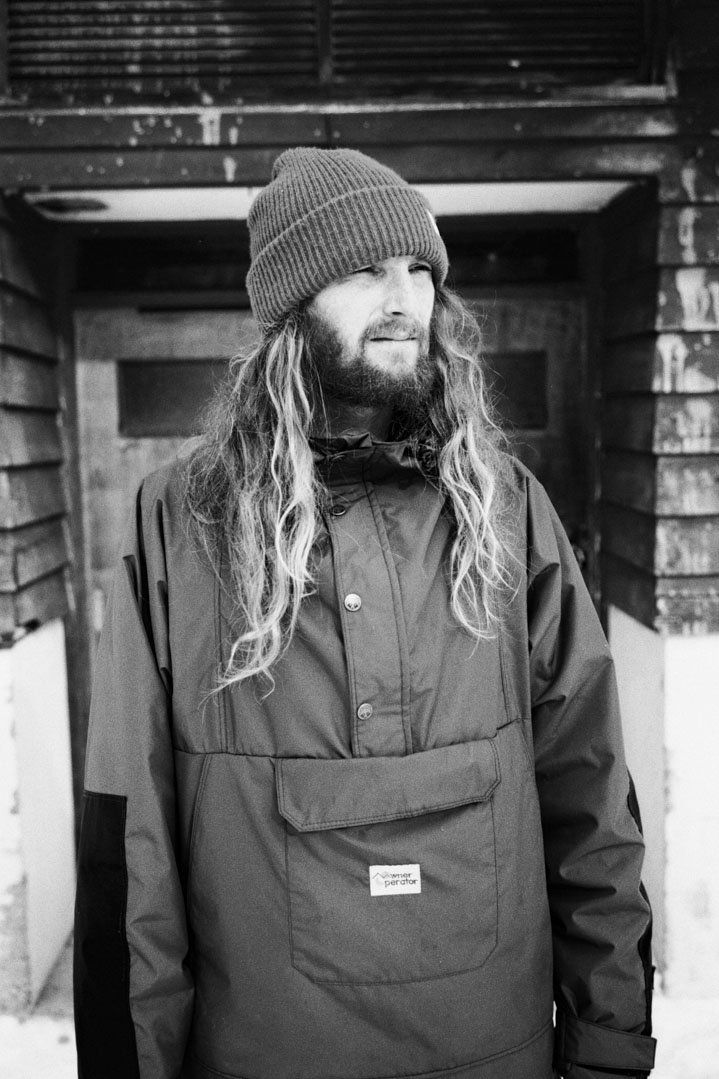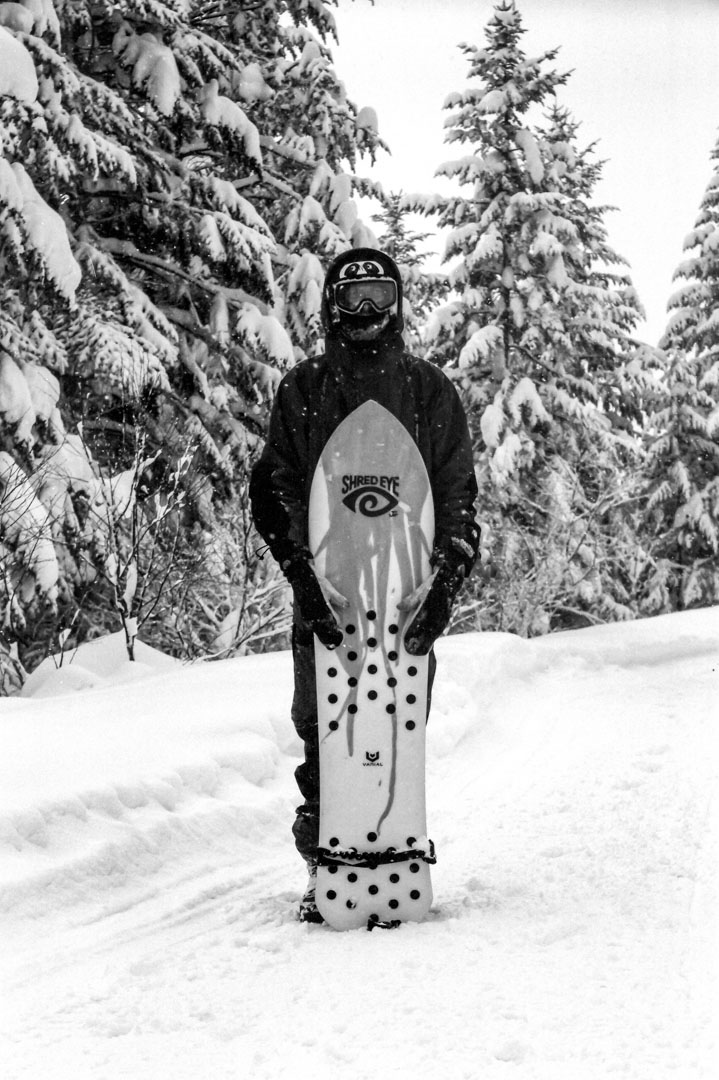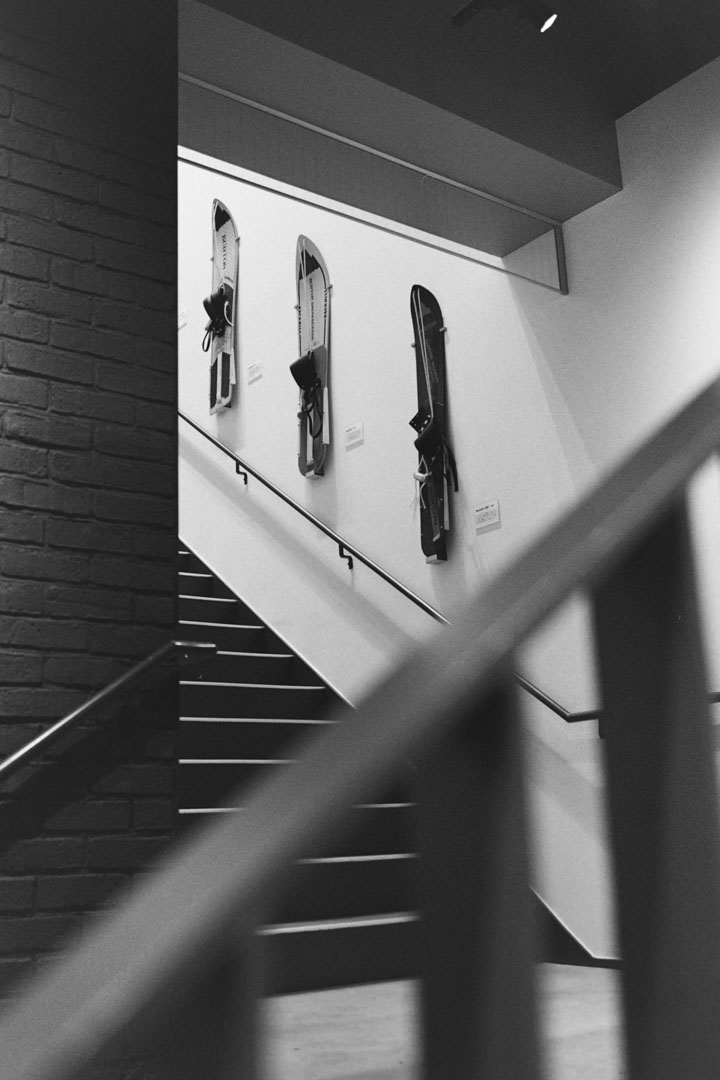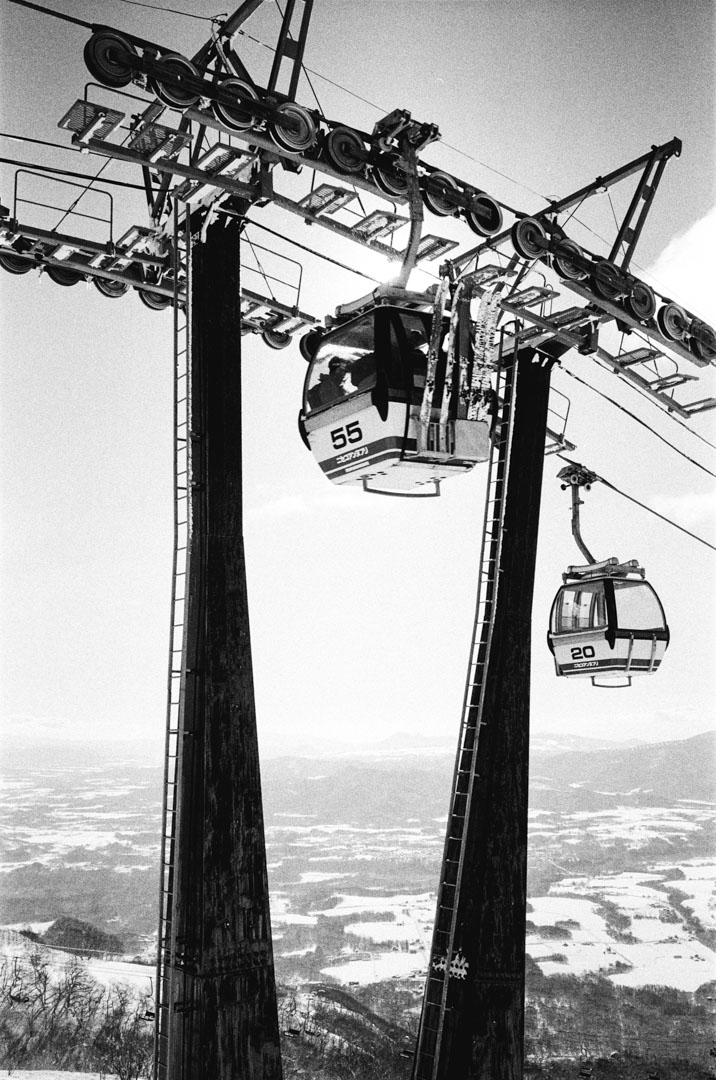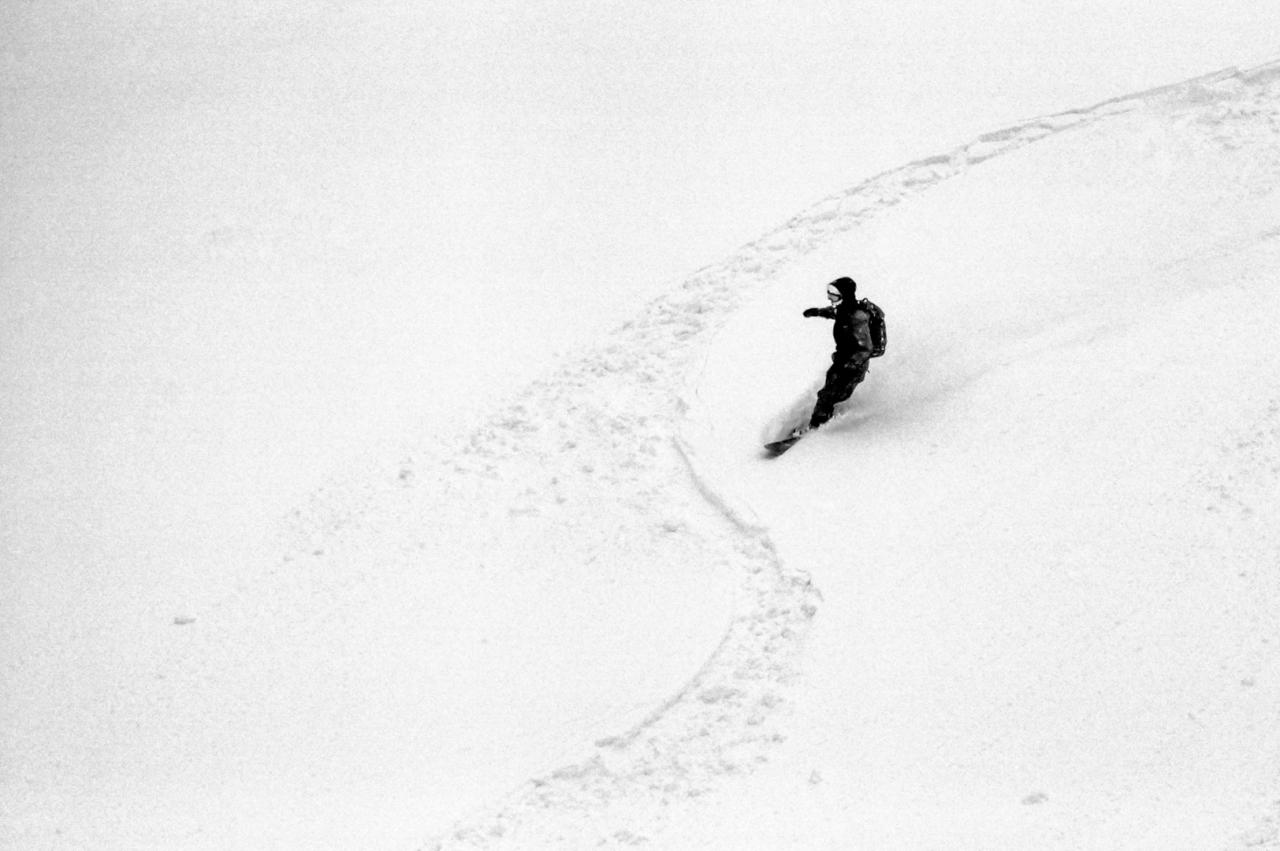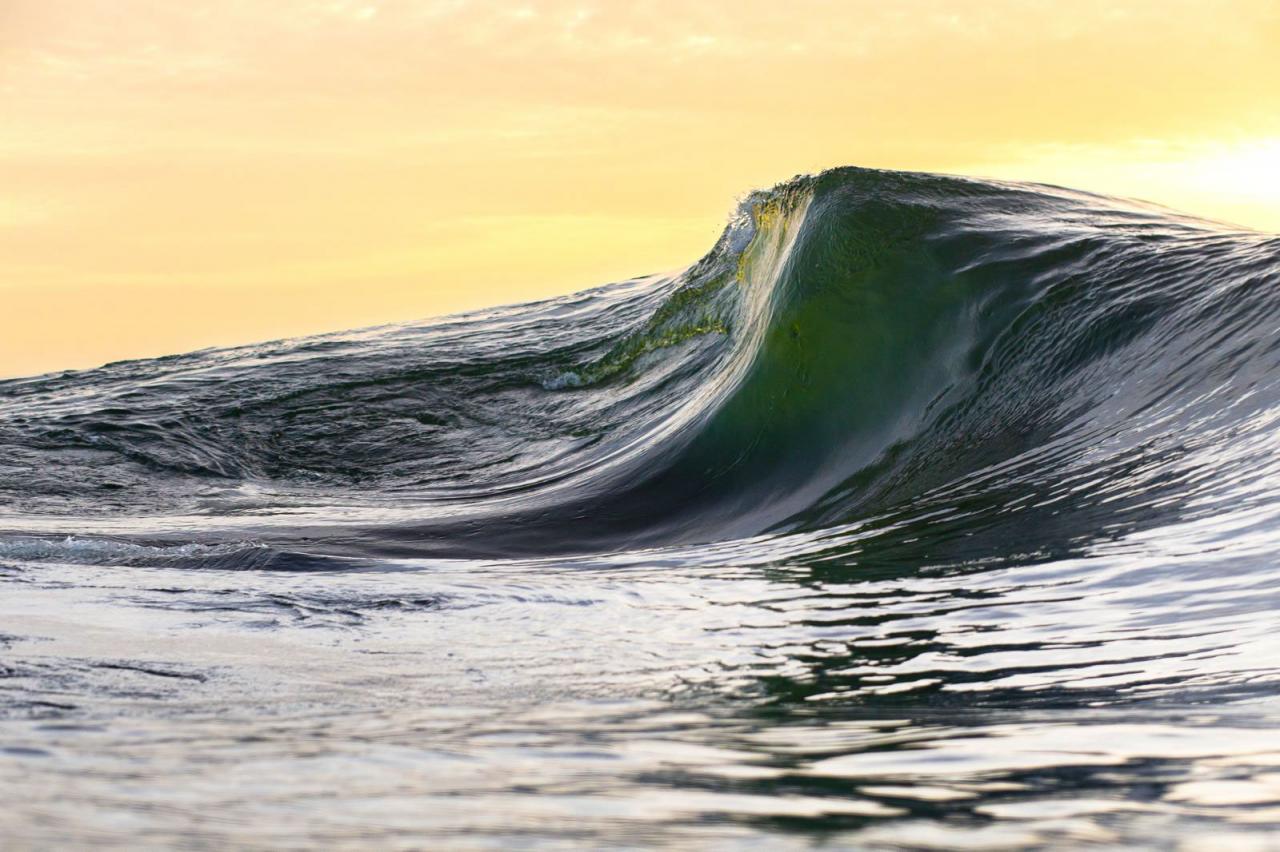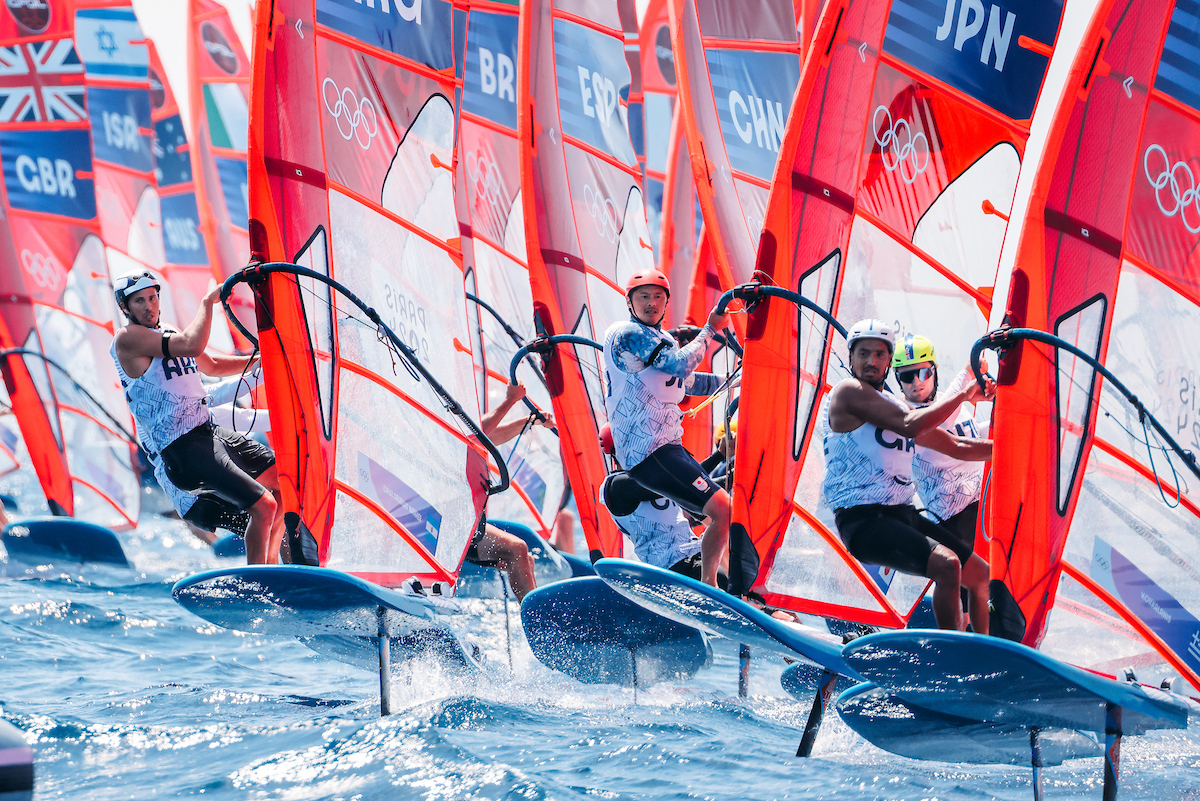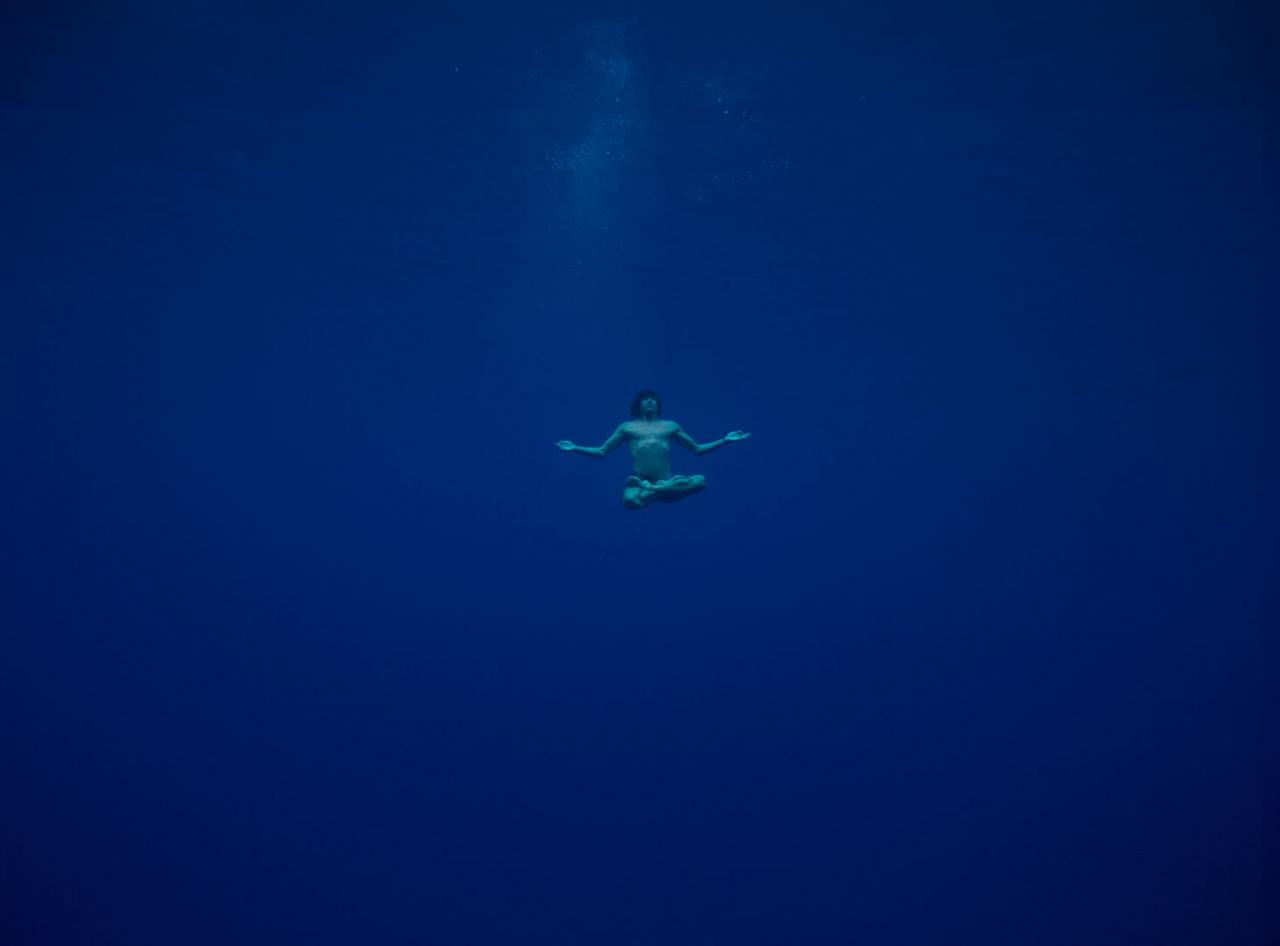This past January, a group of old friends finally checked off a longtime bucket list item by visiting Hokkaido, the northern island of Japan. The prefecture is known for many things - amazing food, generous people, and bottomless powder are among the most noteworthy. As one of the only snowboarders in the group, and also as one of the more indecisive members, I brought a small quiver of boards including my JG Gerndt-designed “Thirdeye” pow surfer. Over the course of our two-week adventure, I contemplated many parallels between the modest, style-focused act of riding a well-designed board without bindings, and the kind, humble, refined nature of Japan and its people. This article aims to explore the notions of humility, style, efficiency and grace on a board and in culture, aiming to paint a portrait of a trip that will live in our hearts and minds for the rest of our lives.
Powder surfing is like a silent dance with snow, where the surfer moves with respect and quiet reverence, allowing the mountain to lead. Just as a whisper blends seamlessly into the winter wind, powder surfing requires the surfer to blend humbly with the natural terrain, leaving only a gentle trace. With these notions in mind, my friend Giles and I started our slow and steady trek uphill, aiming to capture a few moments on film as we soaked in another day of soft powder. We moved quietly, taking in the scenery as we gained elevation. If it were not for the large amount of space between the hardwoods and the trail sign Kanji (the system of Japanese writing derived from Chinese characters), one might mistake the landscape for our home back in New England. It is hard not to feel happy and at peace with the world on this northern island, a feeling many of us get back in our home state of Vermont.
As we ascended, we were on the alert for sunlit, untouched pockets of powder. Giles and I have known each other and worked together on various creative endeavors for twenty years. There is an indescribable joy in pursuing shared passions with an old friend. Shredding, photography, travel and exploration have always been the threads that weave our friendship together, year after year. This day, we both had the sense that it really didn’t matter what might come of the photographs we were trying to take. We knew they would be special simply because we were capturing them together. With this unspoken mutual understanding, we continued our search.
We found a beautiful spot, and as Giles began exploring angles, I took a roundabout approach to avoid disturbing the fresh, untouched snow. I stood at the top of my line, Giles’ trademark red jacket just barely visible through the birches and painted maple trees. If we executed our plan, we’d create art that would capture the memory of this day, further imprinting the adventure into our minds. And the vessel that would bring us to this moment of capture is a work of art in and of itself. Ever since acquiring the board, I knew it belonged here in this country, on this island, in these mountains. As I placed the “Shredeye” powder surfboard under my feet to take that first run, I contemplated its design.
The pow surf craft designed by JG Gerndt is an analogue to the meticulous attention to detail famous in Japanese engineering. Our journey to the top of this untouched powder run gave us a glimpse into these world-renowned systems and the humble folks who operate them. Similar to a handbuilt board, a journey is a series of connected lines through which we gain a sense of connection with place. While our trip to Hokkaido involved an array of interconnected rides on planes, trains, and automobiles across a grid developed over centuries, the “Thirdeye” pow surfboard is an amalgamation of contemplation, materials research, prototyping, and testing developed over decades. Both exercises in design achieved their original goals of creating effective and efficient modes of motion through space and time. At first glance, both the Japanese transportation system and the Shredeye-designed boards might appear ordinary. The Japanese transportation apparatus utilizes various modes to get you from point A to point B, like in any other country, and the “Thirdeye” pow surfer has a top, bottom, nose, tail, and rails to get you down the hill. However, upon closer inspection, both reveal an attention to detail that allows them to stand out among their peers and competitors.
Japan's transportation system stands as a beacon of efficiency, rooted in meticulous planning and seamless coordination across trains, buses, and subways. The renowned Shinkansen, Japan’s high-speed railway, ensures punctual, reliable travel, offering a viable alternative to air travel for domestic routes. The Shinkansen train embodies sleek, modern elegance with its streamlined design and futuristic silver sheen, gliding effortlessly across the Japanese landscape like a symbol of technological grace. The powder surf crafts designed by JG hold many of the same beautiful and sleek characteristics that make them not only a pleasure to look at but also some of the most enjoyable boards to ride in the deep Hokkaido snow.
The “Thirdeye” model, with its surfboard-esque rounded tail and contoured bottom, is my powder surfer of choice. Its well-foiled and elongated shape ensures smooth, effortless gliding over deep snow. The elegant and informed outline paired with simple yet thoughtful resin art looks natural and beautiful in snowy, woodsy environments. The board features a contoured nose and bottom for improved flotation and a tapered tail for precise turns, embodying both functionality and aesthetic appeal. Crafted with high-quality, surf-inspired materials not found in any other powder surf designs, JG’s boards merge performance and design with visual elegance, making them standout choices for powder enthusiasts. The board is incredibly light and nimble. In my eyes, they are the Shinkansen of powder surfboards.
As I stood at the top of my line, adjusting my foot placement on the board, I felt deeply connected to the moment, the place, and the board beneath me. I knew JG had stood atop many similar peaks, not only in this beautiful country but around the world. I knew all those experiences influenced the very board I was standing on. Broken into hundreds of different lines, each of those moments is connected by one single line. Call it stoke. Call it informed design. Call it whatever you wish. The line I was about to draw with my board is just the continuation of that line.
With Mt. Yōtei to my left and an endless sea of well-spaced hardwoods surrounding me, I called my drop and slowly gained momentum. As I picked up speed and the board started to plane on the deep snow, I began to draw my line. I selected a slightly steeper part of the run with a few clumped stands of birches. I made one long toeside turn above one of the trees and trimmed right towards another grouping, doing a shorter speed-reducing (and powder-tossing) heelside turn near one of the striped maples. I took one more heelside turn to scrub a little more speed before entering the final section of the line and eventually the untouched patch of sparkling white powder where we would hopefully take the photograph. After the second speed-adjusting heelside turn, I dropped over a small roller, building my speed back up for the money turn in the little patch of sunlight, twenty feet away from Giles and his Leica. Although I am regular-footed, I did my best Gerry Lopez impression, allowing my board and body to follow my hands and outstretched fingers. All I could hear as I cruised by was the “swooooooosh” of snow being displaced and the sound of Giles’ shutter at just the right moment. I couldn’t help but smile ear to ear as I cruised over the last roller and down into the flats. I jumped off my board “spread eagle” style into a deep cloud of snow.
One aspect of powder surfing that I appreciate is the deep focus on style. If we were to rewind the clock by one minute and I were at the top of that line with my regular snowboard on, I would have seen the riding landscape in an entirely different way. I’d be scoping out the best place to catch some air or the ideal spot to throw a big arching turn. Drawing lines while unstrapped, standing on top of the board without bindings, forces you to take a much more humble approach to navigating down the mountain. Focus shifts away from tricks and converges on the style, flow, and the functionality of the craft beneath your feet. The question becomes, “Where can I do a heelside turn that will set me up for a long, drawn-out arc of a toeside turn through that gap in the trees?” Riding down an untouched field of Japanese powder with nothing but your choices in movement keeping you anchored to your board, time seems to slow. Line choice and style become the sole means to the end. And what is that end? For me, and many others who ride powder surfboards, the most important goal always seems to be fun and connectivity to place. This question and answer formulate into a meditation on style and grace.
In Japanese culture, the concepts of "wabi-sabi" and "kirei-sabi" embody the profound integration of style and humility into daily life. "Wabi-sabi" celebrates the beauty of imperfection and transience, emphasizing simplicity and the appreciation of natural flaws. This aesthetic is reflected in the tranquil minimalism of Zen gardens and the rustic charm of ceramics bearing subtle asymmetries. Complementing this notion is "kirei-sabi," which celebrates refined elegance through meticulous craftsmanship. It finds expression in the precise lines of calligraphy and the understated grace of traditional architecture, where every detail serves a purpose without ostentation. In carpentry terms, it’s meticulous joinery versus nail-gun frenzy. Both philosophies underline not just an aesthetic preference, but a profound respect for the inherent beauty of modesty and the harmony found within simplicity. Together, they form a cultural ethos that honors both external refinement and inner humility as essential facets of Japanese identity.
As I reflect on our journey through Hokkaido and the moments spent gliding through its bottomless powder, I realize how deeply intertwined the principles that guide both the art of powder surfing and the essence of Japanese culture are. In the humble dance between rider and mountain, where every turn reverberates an admiration for nature's contours, I found an analogous reflection of Japan's own relationship with its landscapes and social philosophy. It is in the shared moments of grace, whether captured in the fluid lines of a board's design or the quiet charm of a Zen garden, that we discover not only beauty but a timeless connection to the places and cultures that shape us. Hokkaido will forever hold in our hearts the memories of effortless turns and quiet camaraderie, reminding us that true artistry lies not only in what we create, but in how gracefully we navigate the spaces between.

